Who is Matteo Messina Denaro? Cosa Nostra boss was dubbed The Devil ‘murdered 50’
>
The name Matteo Messina Denaro sends shivers down the spines of Sicilians who have spent decades in fear that they could be added to the long list of his victims.
For 30 years, the crime boss continued to wield huge power and coordinate decades of terror which resulted in the deaths of over 50 people, despite never being seen in public after going on the run in the early 90s.
The mafioso, who once boasted he could ‘fill a cemetery with his victims’, was forced into hiding after he ordered a series of deadly attacks, including the murders of anti-mafia prosecutors Giovanni Falcone and Paolo Borsellino, as well as a series of car bombs in Florence, Milan and Rome that left 10 people dead and 93 injured in 1993.
And children were not off limits. In the same year, Messina Denaro helped organise the kidnapping of a 12-year-old boy, Giuseppe Di Matteo, in an attempt to dissuade his father from giving evidence against the mafia, prosecutors say.
The boy was held in captivity for two years before he was brutally strangled to death, and his body dissolved in a vat of acid.
For 30 years, Matteo Messina Denaro (pictured in the 1990s) has continued to wield infinite power and coordinate decades of terror which saw over 50 people killed, despite never being seen in public after going on the run
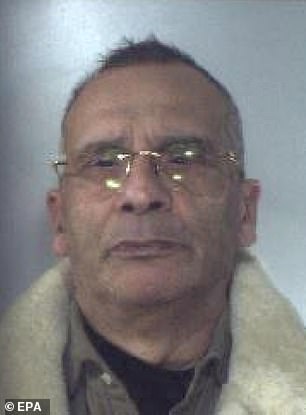
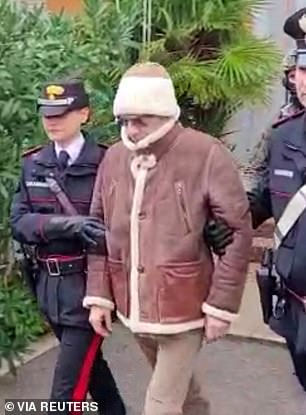
Matteo Messina Denaro, Italy’s most wanted Mafia boss who had been on the run for 30 years, was arrested today. Pictured: A mugshot of Messina Denaro from today (left) and being led away by police officers (right)
After three decades on the run, Italy’s No. 1 fugitive was arrested at a private clinic in Palermo, Sicily.
The 60-year-old was led away from Palermo’s ‘La Maddalena’ hospital by two uniformed carabinieri police and bundled into a waiting black minivan – potentially closing the door on a long chapter of blood and violence wrought by the crime boss.
Nicknamed ‘Diabolik’ and ‘U Siccu’ (The Skinny One), Messina Denaro had been sentenced in absentia to a life term for his role in the 1992 murders of the two anti-mafia prosecutors Falcone and Borsellino.
The horrific murders were a trademark for the feared criminal. They shocked the nation and sparked a crackdown on Cosa Nostra, the real-life Sicilian crime syndicate depicted in the Godfather movies.
Messina Denaro was born into the mafia. Hailing from from the small town of Castelvetrano near Trapani in western Sicily, he was the son of influential mafia ‘capo’ (captain) Francesco Messina Denaro.
He quickly rose through the ranks of the Sicilian Mafia, and eventually followed in his father’s footsteps to become the boss of Cosa Nostra.
He is said to have first used a gun at the age of 14 and allegedly killed at 18, and is accused by prosecutors of going on to be solely or jointly responsible for numerous other murders in the 1990s.
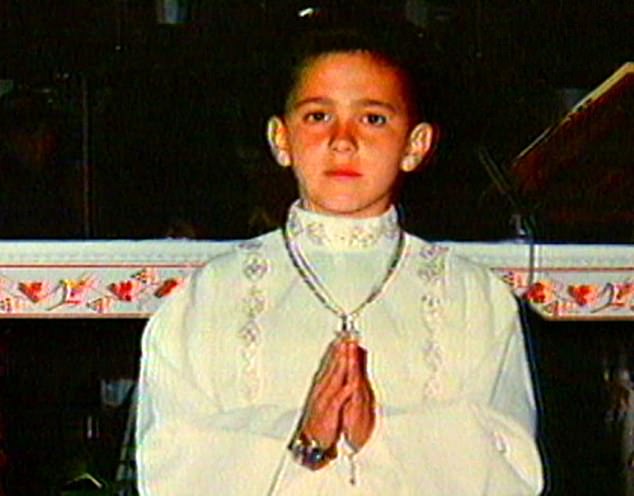
In 1993, Messina Denaro helped organise the kidnap of a 12-year-old boy, Giuseppe Di Matteo (pictured), in an attempt to blackmail his father into not giving evidence against the mafia, prosecutors say
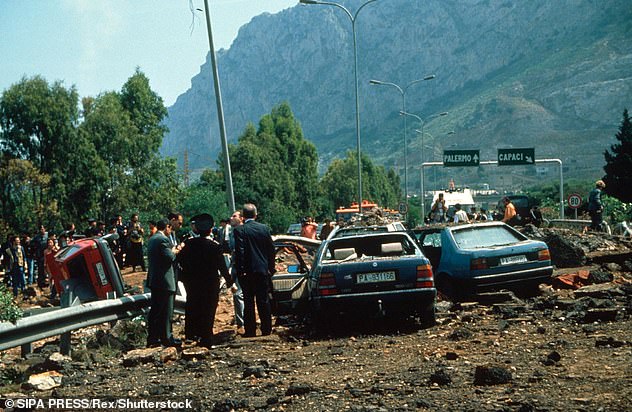
Messina Denaro was sentenced in absentia to a life term for his role in 1992 in the murders of anti-mafia prosecutors Giovanni Falcone and Paolo Borsellino. Pictured: The scene of the murder of Falcone in Palermo, Sicily, in 1992
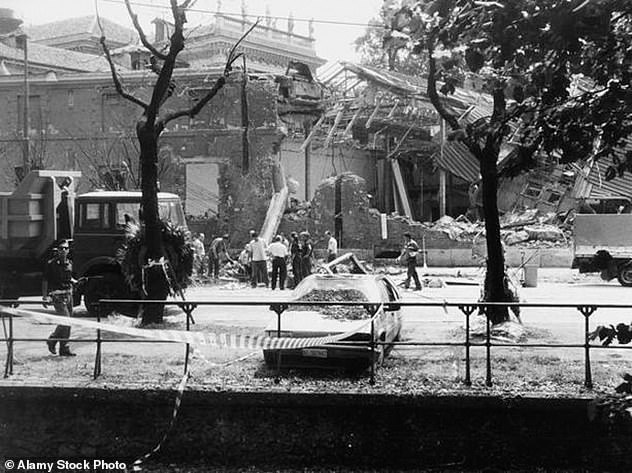
The mafia boss, who comes from the small town of Castelvetrano in Sicily, also faces a life sentence for his role in bomb attacks in Florence, Rome and Milan which killed ten people the following year
Messina Denaro lived a playboy lifestyle. He was known for driving expensive cars and for having a taste for wearing finely tailored suits and Rolex watches.
And his life as a womaniser was just as deadly as his job in his father’s business, with one of his earliest victims said to be a hotel boss who objected to his affair with a receptionist who worked at the establishment.
In 1993, he is reported to have assassinated rival boss Vincenzo Milazzo. His attention then turned to Milazzo’s pregnant girlfriend, who he strangled to death.
He also became one of Cosa Nostra’s deadliest soldiers when a war erupted between the mafia and the state over stricter prison laws for convicted gangsters.
The crime boss was also convicted for the murder of 12-year-old Giuseppe di Matteo, who was abducted and held captive for two years in a bid by the mafia to stop the boy’s father from testifying against them to the state.
After all that time in captivity, he was brutally strangled to death and his body was disposed of in a bath of acid.
It was in the same year that Messina Denaro is accused of having a role in bomb attacks in Florence, Rome and Milan that killed 10 people and injured 93.
The attacks were carried out alongside notorious hitman Giovanni Brusca, who boasted to murdering 200 people single-highhandedly.
The bomb attacks, that targeted some of Italy’s most historic monuments, forced Messina Denaro into hiding. He faces a life sentence for his role.
However, being in hiding did little to quell his influence.
After ‘boss of bosses’ Leoluca Bagarella was arrested in the clampdown that followed the bombing spree, Messina Denaro was taken under the wing of Bernardo Provenzano who would increasingly refer to him as his ‘nephew’.
From there, Messina Denaro worked to bring the mafia into the modern age.
He united the scattered mafia clans around the city of Trapiani, formed connections with Columbia’s cocaine cartels, and cultivated a Robin-hood like status. At the same time, he was seen as bringing the mafia into the modern era.
But despite his reputation as a moderniser, he had to avoid using phones and the Internet to reduce his chances of being caught.
His womanising ways raised eyebrows among the clans more conservative members. He fathered a daughter in 1995, which was seen as not being in keeping with Cosa Nostra’s more traditional family values.
Nevertheless, he climbed to the top. When Provenzano was arrested in 2006 after 43 years on the run, Messina Denaro was tipped as his obvious successor.
And with his mentor’s death in 2016 – followed by the death of influential godfather Toto Riina a year later – Messina Denaro was all but unopposed at pinnacle of the Sicilian Mafia, and was a popular figure among some of the locals.
As the net was tightening around him, fan pages on Facebook sprung up during his later years on the run. ‘Cosa Nostra works for the poor and the oppressed, seeking, in its own way, to correct mistakes,’ one adoring page found by The Guardian in 2014 swooned. At the time, 30 of Messina Denaro associates were arrested.
Francesco Garofalo, member of anti-mafia group Libera, told the newspaper at the time: ‘What you hear all the time in town, and on blogs, is how the mafia gives work and the government takes it away. There are people here who would like to see Messina Denaro appointed mayor.’
While the arrests were seen as the beginning of the end for the mafia boss at the time, it still took some of Italy’s best investigators more than seven years from that point to finally get him in handcuffs.
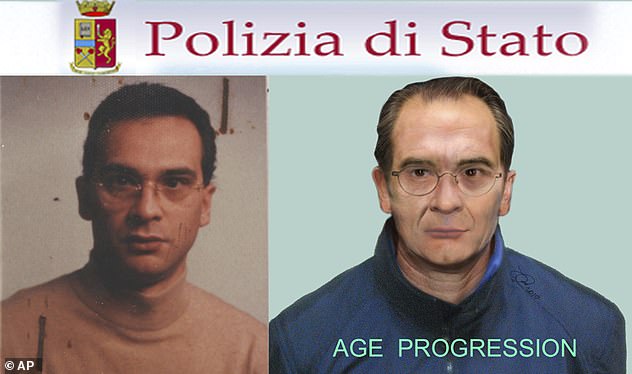
A composite picture shows a computer generated image released by the Italian police, right, in their efforts to track the mobster down, and a picture of Matteo Messina Denaro, left

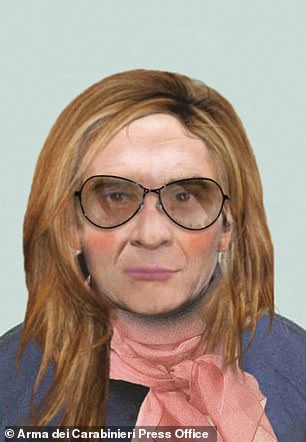
Pictured: Police reconstructions of the face of Messina Denaro shared to the public, depicting what he could look like today as an older man, and in costume as a woman

Messina Denaro, head of the notorious Cosa Nostra gang and nicknamed ‘The Devil’ following a string of brutal murders, was captured when armed police swarmed a private medical facility in Palermo, Sicily, where he was undergoing treatment
Investigators spent decades searching the homes and businesses of the boss’s known allies on the island. Despite being number one on Italy’s most-wanted list, the only known photo of him dated back to the early 1990.
A new e-fit was created in 2014 with the help of an informant.
In 2015, police discovered Messina Denaro was communicating with his closest collaborators via the pizzini system, where tiny, folded paper notes were left under a rock at a farm in Sicily.
Police looked in particular for hiding places in grottoes, caverns or even bunkers inside buildings where the man nicknamed ‘Diabolik’ could be concealed.
Police said last September that he was still able to issue commands relating to the way the mafia was run in the area around Trapani, his regional stronghold.
The arrest of ‘an extremely dangerous fugitive’ was ‘an extraordinary day for the state’, Interior Minister Matteo Piantedosi said.
The arrest comes almost 30 years to the day since police arrested Salvatore ‘Toto’ Riina, the Sicilian Mafia’s most powerful boss of the 20th century.
He eventually died in jail in 2017, having never broken his code of silence.
‘It is an extraordinary event, of historic significance,’ Gian Carlo Caselli, who was a prosecutor in Palermo at the time of Riina’s arrest.
Experts say that Cosa Nostra has been supplanted by the ‘Ndrangheta, the Calabrian mafia, as the most powerful organised crime group in Italy.
‘There is a sense that the Sicilian Mafia is not as strong as it used to be, especially since the 90s, they have really been unable to enter the drug market and so they are really second-fiddle to the Ndrangheta on that,’ said Federico Varese, Professor of Criminology at Oxford University.
Cosa Nostra’s bombing strategy of the early 1990s – which triggered national outrage and forced politicians to act – introducing waves of anti-mafia laws and making hundreds of arrests.
‘That ‘declaration of war’ against the state certainly meant a weakening of the organisation that fostered other groups, such as the ‘Ndrangheta,’ said Federico Cafiero De Raho, a former national anti-mafia prosecutor and a lawmaker with the opposition 5-Star Movement.
Any revelation from Messina Denaro on the group’s activities could be a further major development.
‘According to all knowledge, he had a role in the bombings and further developments are possible,’ said Gian Carlo Caselli, who served as chief prosecutor in Palermo at the time of Riina’s arrest.
